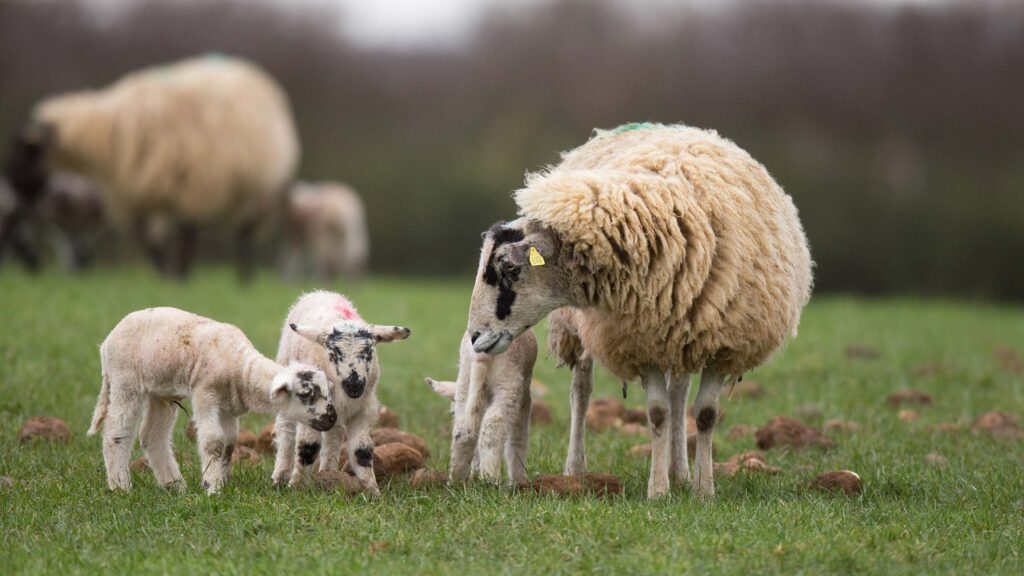How a beef and sheep farmer learned to set realistic goals
 © Tim Scrivener
© Tim Scrivener Going on a business course not only helped Matt Jordan to work out what he wanted to do with his family farm – it clarified what he did not aspire to.
It meant he could apply the planning and financial skills he’d picked up to establish more realistic goals for creating a profitable, resilient farm.
See also: 3 ways suckler beef producer sharpened business skills
Matt told delegates at the “Strive and thrive: Building profit and resilience in sheep farming” session at the National Sheep Association conference in Harrowgate that he learned to see his farm as a set of separate enterprises.
This meant assessing each one in terms of profitability and weakness, then looking at where savings might be made, simplifying their farming and letting them do it well.
“It wasn’t just about numbers, but what type of farmers we wanted to be,” he said.
Matt and his father are tenants of 162ha (400 acres) near Alnwick, Northumberland, with Matt working off-farm four mornings a week as a pasture-fed livestock consultant.
They tup 700 ewes a year and run 100 sucklers, finishing all progeny on farm.
Within the family, Matt said, his off-farm job was classified as the farm’s “diversification”, and he clearly did not want to come home to run a campsite or café, nor a diversification that propped up a loss-making farm enterprise.
Better business decisions
Yet he admitted that he had struggled to make sense of financial documents from the farm accountant.
It was this that prompted him to attend the AHDB’s Roots to Resilience course, so that he could understand more and make better business decisions based on numbers.
“It was about thriving, not surviving,” he said. “I wanted to be profitable, but that is not enough as a goal on its own.
“I considered other options for the farm – such as finishing indoor pigs – but I realised I prefer working with sheep and cows. I want the beef and sheep [enterprises] to stand on their own two feet.”
He also wanted the farm to be profitable without relying on the Sustainable Farming Incentive.

Matt Jordan © MAG/Shirley Macmillan
One big change of mindset was learning to be in the office, working “on the business, not in it”.
He said: “That doesn’t feel like proper work to a farmer: it’s a soft option. Our perception is that a good farmer is busy working outside.
“[Paperwork] is not the reason we farm. But we need to try to recognise the value of that time in the office.
“Start to make yourself want to do it – not in the evenings after a busy day, when you just want to fall asleep, but put time in the diary to look at costs and plans.
“For us, it is Saturday morning, or one worknight evening, when we sit down for an hour and plan ahead.”
However, Matt also revealed that after the course, he was guilty of trying to force his enthusiasm for new ideas and business plans onto his parents, rather than picking the right time and place to discuss them strategically.
“I started conversations in the middle of a job or when it was time to go home for tea. It wasn’t very constructive for a clear discussion and outcome,” he said.
“I learned on the course that amateurs have ideas, and professionals bring proposals, so now I talk with Dad about numbers and what that means for the next five years.”
Best margin, not best price
Learning about the “dead wood” in a business was also important as, for him, the dead wood turned out to be finishing cattle.
After investigating supermarket and scheme premiums as potential alternatives to the local auction mart, Matt said he was able to make a conscious decision that he would stick to selling in the live ring, but be aware that it can “cost a lot to get there” in feed, labour and associated costs.
“It’s about what leaves you the best margin, not just what gets the best price at mart.
We housed in October to get stock off the fields. Now, our policy is that everything is off the farm by the end of September,” he said.
Another management change was to breed ewe lambs to increase flock numbers and make use of some additional land.
The farm is now breeding its own replacements for both cattle and sheep enterprises, instead of buying in breeding females and using terminal sires.
Operating a 50:50 cattle to sheep stocking rate has, however, been retained. “It’s a good place to be. It’s tempting to increase cattle numbers when prices are good, but we keep a balance to future-proof,” he said.
